Figs are among the oldest cultivated and perhaps the most diversified fruits on the planet. There are hundreds of varieties of figs. They have different colors (black, pale green, or yellow), shapes, and sizes.
Despite being so diverse, only about half a dozen fig varieties are cultivated commercially. They can be enjoyed as fresh or dried fruits.
In this post, we explore the most popular types of figs, their fruit shapes, taste and applications. Read another article for In this post, we explore the most popular types of figs, discussing their fruit shapes, taste and applications. Head to another article to learn some amazing facts about figs..
Commercially Important Types of Figs
Before introducing different types of figs, we should mention that figs are available in two general forms regardless of variety: fresh figs and dried figs.

On the other hand, dried figs are durable and shipped to distant markets. Dried figs are classified as dried fruits.
About 90% of the world’s fig stock is dried. Even though dried figs do not have the smooth texture of fresh, they offer a compact nutritional package. Most notably, they boast an extraordinary amount of dietary fiber, over nine grams in a serving (4 figs). Dried figs are also rich in vitamin B6, vitamin E, antioxidant phytochemicals, and potassium.
All of the fig varieties discussed below are available as fresh and dried.
Common Fig: Water Resistance
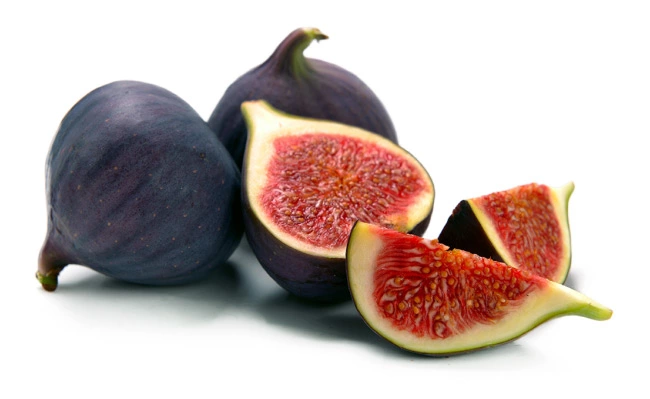
I know you are surprised but, yes, common fig is a type of fig. It is called such because they are the most found types of figs in cities.
You can grow it privately in your backyard or institution, and it can produce edible fruits without relying on pollination from other fig trees.
Figs that require cross-pollination (pollination by other trees) usually have an opening called “eye” or “ostiole,” allowing pollination wasps to enter and access the internal flowers.
Common figs can withstand insect attacks and are less prone to rotting because they do not feature any opening that can allow insects and rainwater, which might affect the fruit afterward.
Adriatic Figs: White Figs
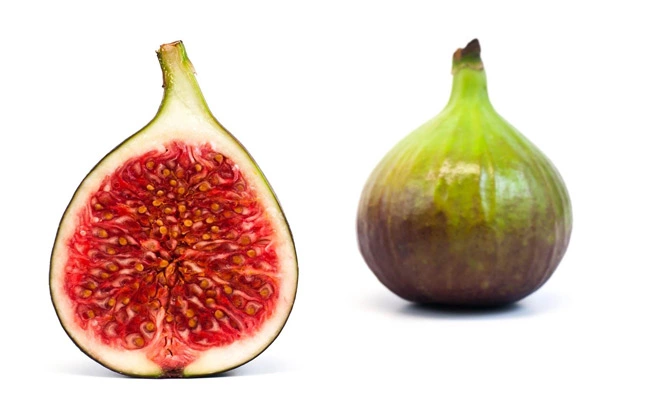
This Mediterranean fig has light green skin with pale pink flesh, especially when they are fresh. Its high sugar content makes it great for drying and applying in fig bars and fig pastes.
Adriatic figs are nicknamed “white figs” for their pale or yellowish-green skin. However, these fruits are delightful and have creamy red flesh inside. They are often candied or eaten on their own due to their excellent flavor.
Celeste Figs: Sweet Figs
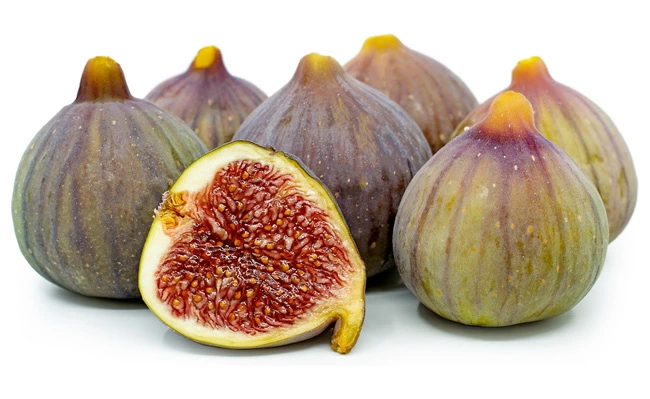
These are small to medium-sized figs with a brown to purple color. But the tree that grows the fig fruits is relatively large. Celeste figs are early-ripening, producing dessert quality figs earlier than most other figs.
They are green at the onset but change color to brown as they ripen. It is recommended to consume ripe Celeste figs the very day you pick them, but they can keep longer if stored in a cool and dry place.
Celeste figs are nicknamed “sweet figs” for their rich sugar content.
Black Mission Figs: The Chief Figs

Black Mission Figs are one of the most common fig varieties in the world. It is believed to have originated in Spain.
Black Mission Figs are relatively small with solid pink flesh and a sticky and chewy texture studded with tiny seeds. If left on the trees for long, the sun dries them out like prunes, yielding an extra sweet and gummy texture.
Their extra sweetness makes them a perfect snack to eat plain or in different sweet and savory dishes and desserts such as yogurt or tangy fresh cheese. Think all types of cheese with figs.
Despite their reputation, black mission figs aren’t black—more of a wildly deep blue-purple that is beautiful in its virtue. Before their introduction to Californians by Spanish missionaries, they were known as the Franciscana, the chief fig of the Catholic missions. The name Black Mission was invented by California growers after they started using the variety.
Brown Turkey Figs: Less Sweet
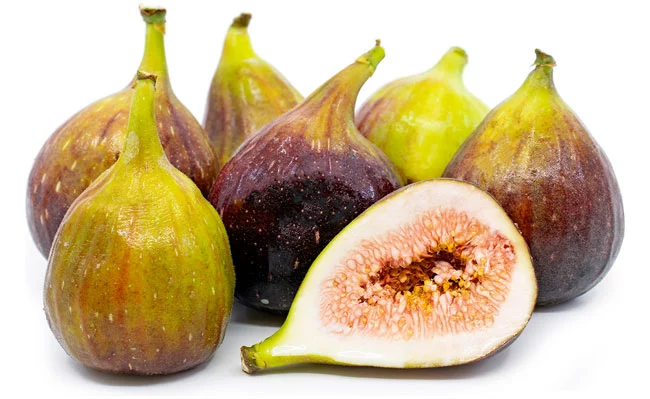
Brown Turkey figs are bigger fruits with brown to pale purple shades on their primarily brown or green skin. They tend to have a light pink flesh with fewer seeds than other figs.
Brown Turkey figs have a milder flavor than other figs and are noticeably less sweet than the similar-looking Black Mission figs, which works well in salads to create a welcome contrast or in cookies where you can use a natural sweetener.
Calimyrna Figs: Nutty Figs
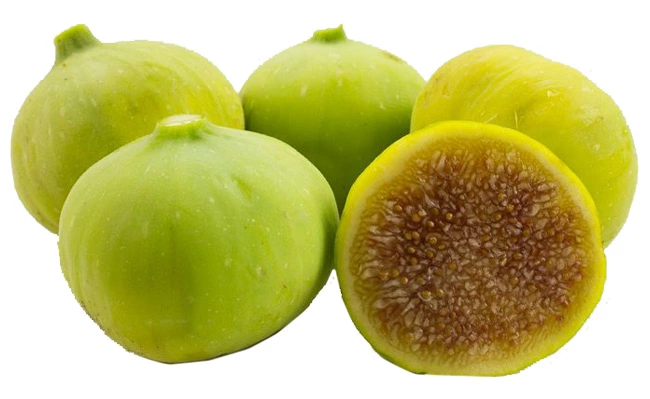
Calimyrna fig is well-known for its large, soft, and delicious tasting fruits. The fig fruits have greenish, lightly golden skin and stunning pink insides.
Because of their charming interiors, Calimyrna figs are a great choice just to cut up and serve as-is. They have a unique nutty flavor, which is characteristic of all figs, a reason why they’re so great with nuts. But Calimyrna figs have a greater sense of nut about them, making them more popular than black mission figs.
Based on its geographical location, Calimyrna is also known as Smyrna. Some people believe that Calimyrna figs are the US version of the Smyrna fig.
Calimyrna fig plants are known to bear female flowers that are cross-pollinated by caprifigs as the donor of pollen.
Kadota Figs: All-light-Green Figs
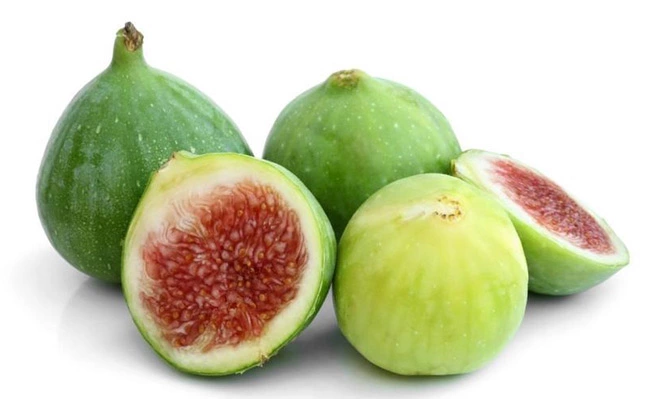
The Kadota figs are an all-light-green type of fig with a pale interior that is less sweet than other figs. But they are sweet enough at the correct ripeness.
The Kadota figs are known as Dottato figs in Italy.
Kadota tree is a beautiful type of ornamental plant with a bold, branching structure during the winter season. It is among the more commonly seen fresh figs in California.
The figs are good raw but can be heated up with other foods or used to make jams and preserves.
Caprifigs: The Pollen Guy
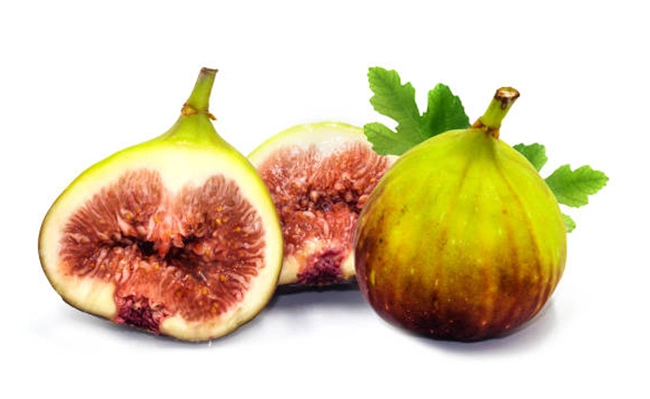
Caprifigs only produce male flowers and never bear fruit. Their only purpose is to pollinate (provide pollen for) female fig trees.
Conclusion
In this article, we discussed the 8 most common types of figs, excluding many types of edible and inedible figs from our discussion. We will update this article in the future to include more sweet figs. So please stay tuned to our website.
What fig variety is popular in your country or city? What color is it? How does the fruit taste?
Please share your comments in the comment section.
FAQ


What is the best figs for digestive issues?
PS : I meant to say FIG tree and Sun
I hv fig tree 2 years old, haven’t started fruiting yet. It’s leaves shape is like a palm (five fingers) can you please tell me what kind of plant is this. Thanks
Muhammad, not sure what type of fig your tree will produce. I’m in Florida. We have hot weather. I planted a fog tree about 5 years ago and it never produced until now. I was thrilled when I saw the first little fruits.
Every year, in Spring the tree would be full of beautiful new leaves and no fruits. Last year, we had to cut down a huge tree that was about to ruin the foundation of our house , we love planting trees, not cutting them down…
I believe the tree was shading the fig tree that after that started receiving more sin and produced for the first time this year.
I like watching videos on YouTube to learn about my plants. Fig trees do well with cow manure and good substrate.
Blessings
Samira